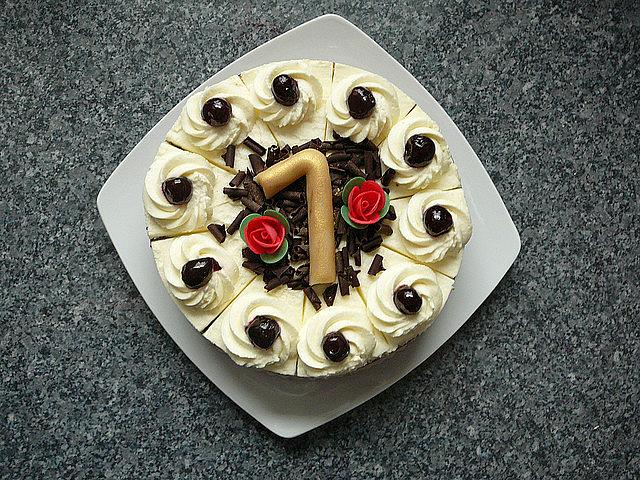Blow Out Your Candle, Retraction Watch, and Get Back to Work!

What started out as a sideshow to a hobby has become a force in science.
Retraction Watch, the site started by two science writers to track flawed research and its ramifications, marks its 1-year anniversary today. The site grew out of Embargo Watch, which Ivan Oransky, the editor of Reuters Health, started as a way to nurse one of his pet peeves: the way academic journals shackle reporters with policies about when and how they can use information before a study's actual publication date. Then Oransky teamed up with Adam Marcus, the managing editor of Anesthesiology News, to create Retraction Watch.
At the time they wrote that "most retractions live in obscurity in Medline and other databases. That means those who funded the retracted research - often taxpayers - aren't particularly likely to find out about them. Nor are investors always likely to hear about retractions on basic science papers whose findings may have formed the basis for companies into which they pour dollars."
No more.
Thanks to Retraction Watch, when a paper gets pulled, the world hears about it. To mark the occasion, I have highlighted my favorite Retraction Watch contributions to medical research and health reporting.
Boosting the font size for retractions. Very few people were paying attention to retractions before Retraction Watch debuted in August 2010. And why would they? As with the corrections that run after newspaper stories, retractions are often tucked away inside an already text-heavy journal and easily missed. They are given little promotion by the journals who publish them or a news release by the institution that may have issued a news release touting the study's results. The National Library of Medicine often adds just one word to its description of an article that has been retracted: "withdrawn." Now, when journal retracts a study, Retraction Watch posts a quick item, which inevitably starts bouncing around Twitter, Facebook and the blogosphere within minutes. This has prompted other outlets to write about retractions that likely would have escaped notice before. The Boston Globe saw a Retraction Watch post and wrote recently about two journal articles that may have duplicated each other's content, a big no-no in scientific publication.
Pulling back the journal curtain. Journals can be mysterious operations. Some are nearly complete black boxes, with no information provided to the public about how studies are vetted, who is vetting them and what happens when a study's findings or methods are questioned. Retraction Watch has started to open at least the final stage of this process to the light of scrutiny. The editor of The Journal of Neuroscience, John Maunsell wrote a thoughtful, if ultimately unpersuasive, explanation to Retraction Watch about why the journal does not tell its audience the reasons behind a retraction if the study's authors are the ones asking that a study be withdrawn.
Keeping the halls of academia honest. One of the most fascinating parts of reading Retraction Watch is seeing how different institutions handle the same flawed research or the same flawed researcher. Marcus and Oransky have done this particularly well in following the case of Jatinder Ahluwalia. The researcher had bounced from Imperial College to University College London and then to the University of East London, dogged by allegations that he had manipulated research, falsified data and sabotaged his colleagues. Retraction Watch then dug up documents showing that more than a decade ago Ahluwalia had been shown the door at Cambridge University for allegedly fabricating data. After Retraction Watch's stories – and stories by others – UEL and Imperial launched investigations of his work. Ahluwalia then left the University of East London, too.
Documenting the domino effect of bad science. Retraction Watch shows writers and readers how tainted research has a way of setting of a chain reaction. If a paper has only just been published and then withdrawn, it may only affect the authors' careers. If it has been around for a while, it likely has been cited in other published papers, and therefore could destabilize someone else's work. When Retraction Watch reported in July that Naoki Mori, a respected Japanese virologist, had been the subject of his 22nd retracted journal article, scientists and lovers of good science should have stood up and applauded. This means that the system of checks and balances in scientific publication, unfortunately for Mori, is working in regard to his research. Antidote can't help but think that last Mori retraction would not have happened without Retraction Watch. In December, Retraction Watch wrote that Mori had been accused of data manipulation, banned by the American Society of Microbiology for 10 years and had multiple articles retracted. Retraction Watch noted, "The earliest of the papers has been cited 26 times, while the most recent has been cited 5, according to Thomson Scientific's Web of Knowledge. Mori was also co-author of a 1999 paper in Infection and Immunity, which has not been retracted." Six months later, Infection and Immunity retracted that 1999 paper. All of this should make us wonder why more retracted articles don't lead to multiple retractions.
Marcus and Oransky also set a high bar for themselves. They are meticulous about giving credit, and they are transparent when they make a mistake and have to correct it. And although their tone is sometimes playful, it is never gleeful. They recognize how difficult the publication process is and how intense the pressure is on academics to publish. There is no schadenfreude to be found here.
Antidote is looking forward to another year of news breaking and establishment shaking from Retraction Watch. Happy Birthday!
Photo credit: Carsten Karl via Flickr

